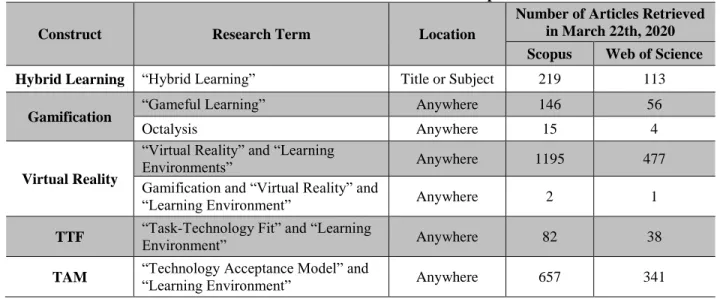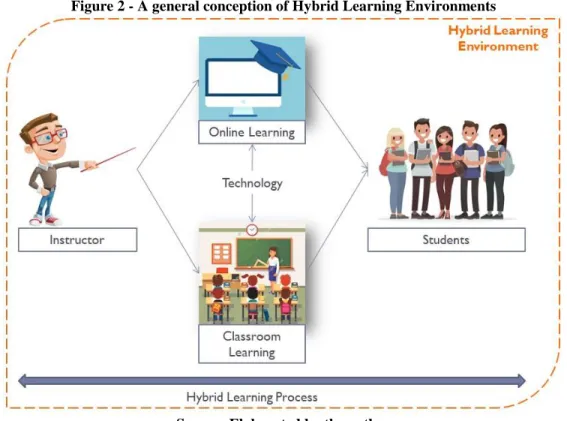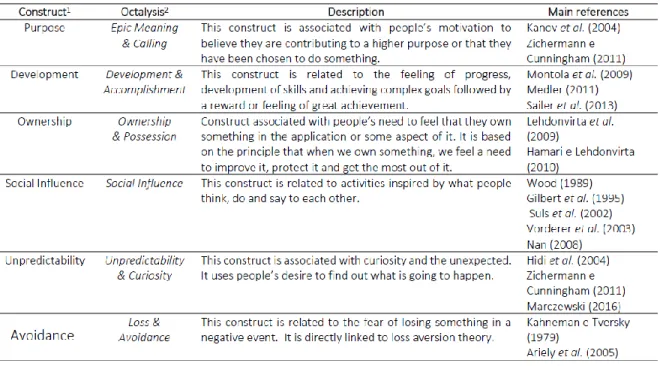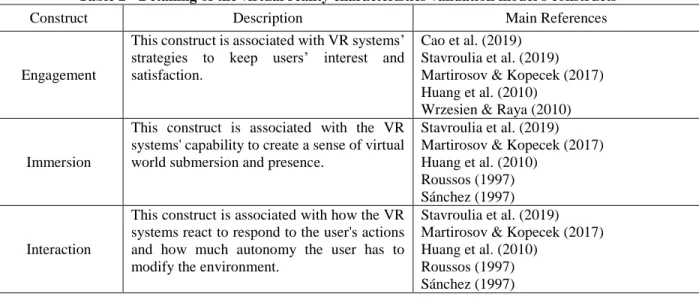A hybrid learning environment has answered this question and proposes a combination of the best features of online learning and traditional classroom learning (Vernadakis et al., 2011). 1 Recognized in December 2019, coronavirus disease 2019 (Covid-19) is an ongoing outbreak of respiratory disease caused by a coronavirus related to the virus that causes severe acute respiratory syndrome (SARS) (Fauci et al., 2020).
Research Problem
Objectives
General Objective
Specific Objectives
Justification
The observed changes in the educational environment and in the profile of students require adaptation of teaching practices. The study brings benefits to society as a whole in the educational and technological fields by generating scientific and practical knowledge.
Relationship with the Research Line and Trail
Related Work
Research developed by Bazelais et al. 2018), Park (2009), and Chang and Tung (2008) assisted in the analysis of student adoption of technology in learning environments and in the development of the methodology used in this study. Although their study did not consider virtual reality and TTF, their analysis guided the development of this questionnaire and study methodology. 2010) helped to define the VR characteristics considered in developing the questionnaire and to evaluate the VR learning environment chosen for this study.
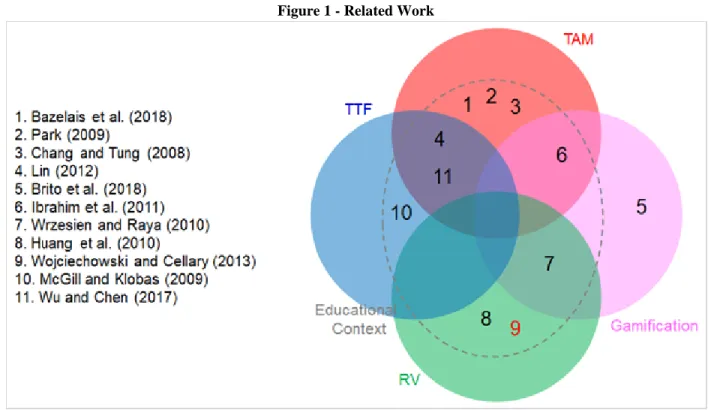
Literature review
The knowledge developed supported the achievement of the first two specific objectives of this study, as well as the development of the methodology, the research model and the data analysis procedure. The results of the data analysis, in turn, supported the achievement of the third specific aim and thus the general aim of the study.
Hybrid learning
Students’ role in hybrid learning environments
According to Vernadakis et al. 2011), the pedagogical framework that increases hybrid learning's effectiveness in participating in students' knowledge development is constructivism. Therefore, hybrid learning environments based on the constructivist approach improve students' decision-making with real-world questions and facilitate the development of social and interpersonal skills (Vernadakis et al., 2011).
Gamification
Serious games help instructors increase student motivation and engagement (Besetti, 2019), which are the two biggest challenges of the traditional learning process (Dicheva et al also highlighted the ability of serious games to engage, as well as their efficiency in developing students' sense of autonomy and power Among the available frameworks, this study chose to analyze the impact of gamification on students' perception of usability, ease of use and fit between task and technology through the validity model of gamification characteristics proposed by Brito et al The model proposed by Brito et al. 2018) "was developed based on the Octalysis Framework created by Chou (2014), in which the characteristics of gamification are divided into eight different constructs previously presented" (Brito et al., 2018, p. 6), which are: meaning, empowerment, social influence, unpredictability, avoidance, inadequacy, ownership and.
By using VR technologies, the serious games enhance immersive experiences and enable the simulation of specific learning or training environments (Cao et al., 2019), such as those that are dangerous or expensive to access in the physical world.
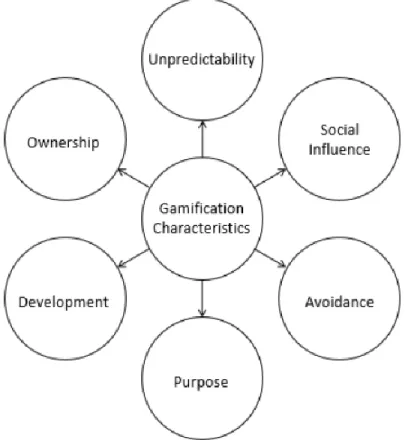
Virtual Reality
Research findings have shown that 3D fully immersive VRLEs elevate student interest and motivation (Huang et al., 2010; Wrzesien & Raya, 2010). According to Martirosov and Kopecek (2017) and Huang et al. 2010), VRLEs are useful in educational contexts not only because it improves students' motivation but also their engagement. Finally, the knowledge construction in VRLE is bilateral, as knowledge developed through the VR environment can be used in the real world and vice versa (Stavroulia et al., 2019).
Regarding collaboration, a study by Huang et al. (2010) showed that VRLE has the potential for social interaction through collaborative learning.
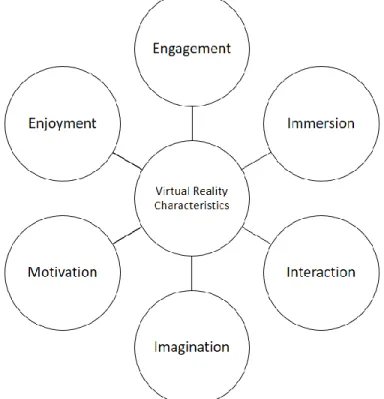
Technology Acceptance Model (TAM)
For the authors, perceived ease of use refers to users' expectations that system use will be effortless (Davis et al., 1989). Thus, the model posits perceived usefulness and perceived ease of use as the key beliefs that influence user acceptance of a specific IS (Davis et al., 1989). The A-BI relationship shown in the TAM implies that people's intentions to engage in behavior are related to attitudes that result in perceived positive effects (Davis et al., 1989).
Thus, the U-BI relationship in the TAM represents the direct effect of people's intentions to use information systems based largely on how it will improve their performance (Davis et al., 1989).

Task-Technology Fit (TTF)
Finally, TAM claims that the use of information system is determined by the users' behavioral intention to use it (BI). As explained by Park et al. 2012), in the presented model, technology acceptance is determined by users' behavioral intention to use a particular information system, which in turn is determined by how users perceived the system's usefulness and ease of use. To understand the relationship between these three factors and user performance and utilization, Goodhue and Thompson (1995) proposed the task-technology fit model shown in Figure 7 below.
The model therefore emphasizes the importance of task-technology fit (TTF) to explain how technology affects performance and how the link between task and technology can influence users' intention to use a certain IT (Goodhue & Thompson, 1995).
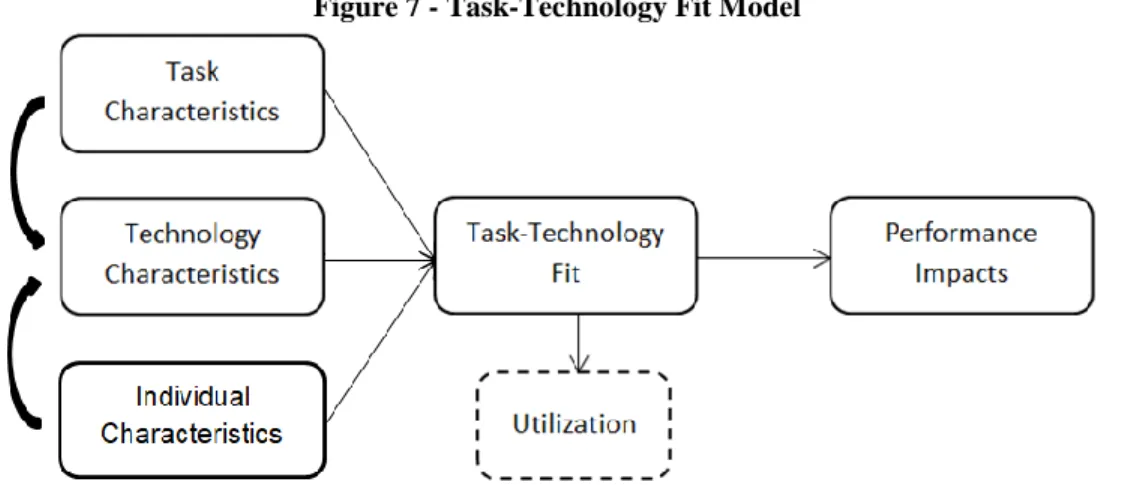
Integration between TAM and TTF
Goodhue and Thompson (1995), task characteristics and individual characteristics moderate the relationship between technology characteristics and its evaluation by users. According to Dishawa and Strong (1999), experienced users will decide to use a particular system based on how well the technological tools and methods will help them with completing the task and improving their performance. A combination of both models, as shown in Figure 8, provided a better explanation of the variance in information technology utilization (Wu & Chen, 2017), compensating for TAM and TTF weakness (Yen et al., 2010). As expected, the actual use of a technology in the integrated model depends on users' perceptions of IT usefulness and ease of use, which is directly influenced by the fit between technology characteristics and task characteristics (Yen et al., 2010).
While researching determinants of users' intention to adopt wireless technology, Yen et al. 2010) concluded that beliefs in TAM and task and technology characteristics in TTF were crucial to their understanding of why an individual chooses one technology over another to perform their tasks.
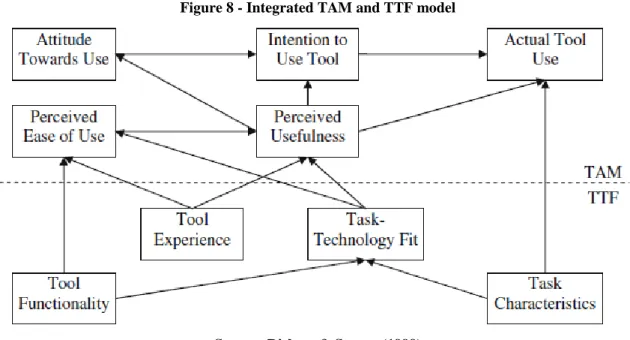
Integration between Hybrid Leaning Environment, Gamification, Virtual Reality, TAM
In addition to the differences in personal characteristics, their behaviors and perceptions may vary depending on the training they participate in. According to the model presented below, the main factors and their influence on students' intention to use gamification and virtual reality in the hybrid can be analyzed. learning process, two things need to be taken into consideration. To develop and test the adopted theory, a post-positivist approach was used to analyze students' intention to use gamification and virtual reality in their process of technical learning.
According to Creswell and Creswell (2017) and Neuman (2014), this approach is used more for quantitative research than qualitative research.
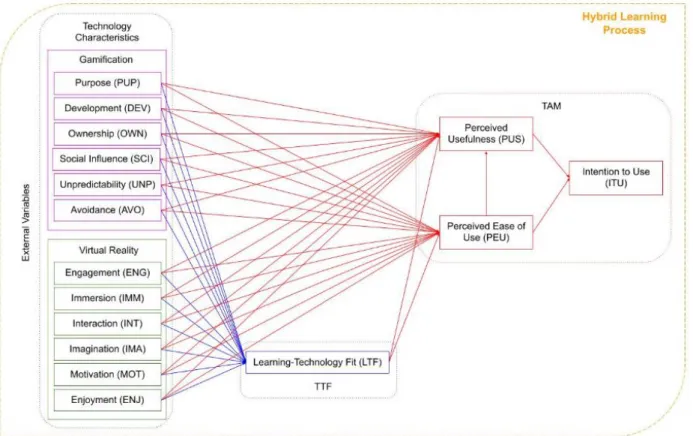
Research Model and Hypothesis
H3 (GA-PUS): Gamification has a positive effect on the perceived usefulness of the hybrid learning process. H4 (VR-PUS): Virtual Reality has a positive effect on the perceived usefulness of the hybrid learning process. H5 (GA-PEU): Gamification has a positive effect on the perceived ease of use of the hybrid learning process.
H9 (PEU-PUS): Perceived ease of use has a positive effect on the perceived usefulness of the hybrid learning process.
Questionnaire Development
H6 (VR-PEU): Virtual Reality has a positive effect on the perceived ease of use of the hybrid learning process. H7 (LTF-PUS): Learning-Technology Fit has a positive effect on the perceived usefulness of the hybrid learning process. H8 (LTF-PEU): Learning-Technology Fit has a positive effect on the perceived ease of use of the hybrid learning process.
H10 (PEU-ITU): Perceived ease of use has a positive effect on the intention to use the hybrid learning process.
Data collection
The original idea of the data collection was to present a gamified learning process and a virtual reality learning environment to engineering students involved in professional training and let them try out both technologies. To prevent the spread of the virus and follow social distancing guidelines from national and international governments, the number of classes and students attending technical training was reduced. For example, on October 30, 2020, the date of the first data collection, few students (10) were available to learn and test the technologies and to answer the questionnaire.
Since the number of respondents was lower than necessary for the statistical validation of the proposed model, a new data collection was necessary.
Data Analysis
- Outlier analysis
- Linearity analysis
- Descriptive analysis
- Factor analysis and First-order constructs validation
- Structural Equation Modeling
- Measurement Model (Outer Model)
- Structural Model (Inner Model)
The second step was to verify the quality and validity of the first-order constructs by analyzing their convergent validity, reliability, sampling adequacy, and dimensionality. To verify the convergent validity of the constructs, we used the Fornell-Larcker criterion (Fornell & Larcker, 1981 apud Wu & Chen, 2017) and an average variance extracted - AVE greater than 50% was defined as the parameter for the convergent validation (Henseler et al., 2009). The convergent validity ensured that the indicators of the constructs were correlated enough to measure the latent concept.
To verify the convergent validity of the constructs, we used the Fornell-Larcker criterion (Fornell & Larcker, 1981 apud Wu. & Chen, 2017) and defined an average variance extracted - AVE greater than 50% as a parameter for convergent validation ( Henseler et al., 2009).
Outlier analysis
Linearity analysis
Descriptive analysis
Analyzing the confidence intervals for the “Avoidance” construct only, we noted that the mean of question AVO03 (“I feel motivated to use game elements to continue progress when others can see that my results are below average.”) was significantly lower than the mean of the other questions AVO01 and AVO02, as the confidence intervals did not overlap. A higher mean for the question related to the interaction between student and instructor represented the importance of the instructor's role during the training process in VR platforms. Analyzing the confidence intervals only for the "Motivation" construct, we noticed that the mean of question MOT01 ("I feel motivated to use virtual reality environments for professional learning purposes.") was significantly higher than the mean of the other questions (MOT02 and MOT03) as the confidence intervals did not overlap.
The positive perception of the use of VR environments for the understanding of course concepts was important for the research objectives and confirmed the expectations.

Factor analysis and First-order constructs validation
The validity and quality of each first-order construct related to the second-order construct “Gamification” were verified and the results are shown in Table 12. The factor analysis adjustment was adequate in all constructs, as all KMO values were greater than 0.50. ;. Likewise, as in the validation of the construct 'Gamification', all questions had a factor loading greater than 0.50, which significantly contributed to the formation of the latent variable and allowed to achieve the basic assumptions for its validity and quality of the virtual reality features chosen for the technology in the developed model.
The validity and quality measures of each first-order construct related to the second-order construct “Virtual Reality” were verified and the results are presented in Table 14 .
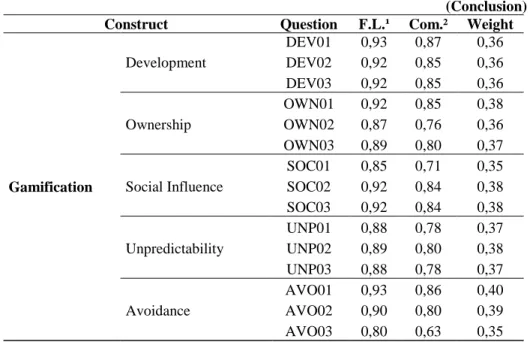
Structural Equation Modeling
Measurement Model (Outer Model)
Structural Model (Inner Model)
IMM02 I feel motivated to use virtual reality environments that hold my attention during the learning process. I feel motivated to use virtual reality environments that encourage greater instructor-student interaction. IMA01 I feel motivated to use virtual reality environments that help me understand technical content.
I feel motivated to use virtual reality environments that enhance my understanding by awakening my imagination. LTF06 I feel motivated to use virtual reality environments because I believe that I learn better with them. I feel motivated to use virtual reality environments because I believe they help me understand tasks independently.

